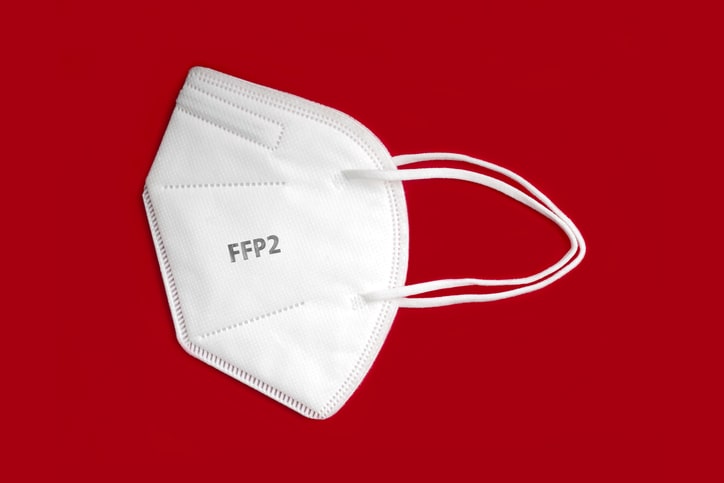
Emerging data on COVID-19 caused by SARS-CoV-2 suggest that patients with underlying kidney dysfunction have worse COVID-19–related outcomes than patients without underlying kidney dysfunction. There have been similar outcome differences across cohorts with and without kidney dysfunction in other illness states such as general critical illness and influenza. The differences may be related to innate immunity impairment, vascular dysfunction, and heightened inflammatory state associated with advanced chronic kidney disease (CKD).
Patients with underlying CKD may be particularly vulnerable to COVID-19 critical illness, characterized by multisystem organ failure, thrombosis, and a heightened inflammatory response. Approximately 10% of patients hospitalized with COVID-19 develop critical illness; the mortality rate in that patient population is exceedingly high. Data from the United States suggest that patients with critical COVID-19 illness accompanied by acute kidney injury (AKI) have worse outcomes than those without AKI. Results of other studies suggest that similarly poor outcomes are seen in patients with critical COVID-19 and pre-existing CKD; patients with kidney failure receiving maintenance hemodialysis are at particular risk.
The sample size in those studies were limited and most lacked comparator populations. Jennifer E. Flythe, MD, MPH, and colleagues conducted a retrospective cohort study to describe the clinical courses of critically ill patients with COVID-19 with and without pre-existing CKD. The study also examined the association between degree of underlying kidney disease and the occurrence of in-hospital mortality and other outcomes (respiratory failure, shock, and thromboembolic events).
The study utilized data from STOP-COVID. Results were reported in the American Journal of Kidney Diseases [2012;77(2):190-203]. STOP-COVID is a multicenter cohort study that enrolled consecutive adults ≥18 years of age with laboratory-confirmed COVID-19 who were admitted to ICUs at 68 geographically diverse hospitals in the United States between March 4, 2020, and May 10, 2020. Patients were followed forward in historical time from admission to the ICU to in-hospital death, hospital discharge, or June 6, 2020, the date of database locking.
The study predictors were the presence (vs absence) of pre-existing kidney disease. The primary outcome of interest was in-hospital mortality. Secondary outcomes were respiratory failure, shock, ventricular arrhythmia/cardiac arrest, thromboembolic events, major bleeds, and acute liver injury.
The study cohort included 4264 patients with COVID-19 critical illness. Of those, 3% (n=143) had pre-existing kidney failure requiring maintenance hemodialysis, 12% (n=521) had pre-existing non–dialysis-dependent CKD, and 85% (n=3600) had no pre-existing CKD. Most (58%) were treated in ICUs located in the northeastern United States.
Patients with non-dialysis–dependent CKD were older than dialysis patients (median, 69 vs 65 years) and patients without pre-existing CKD (median, 69 vs 61 years). Comorbid conditions (diabetes and cardiovascular conditions) were more common in patients with pre-existing CKD (both those on maintenance dialysis and non–dialysis-dependent CKD) compared with patients without CKD.
Of the 143 patients receiving maintenance dialysis, 90% (n=128) were receiving in-center hemodialysis, 6% (n=9) peritoneal dialysis, 1% (n=2) home hemodialysis, and 3% (n=4) had undocumented modality prior to hospital admission. Of the 128 patients on in-center hemodialysis with a known access type, 64% (n=82) dialyzed via a fistula, 27% (n=35) via catheter, and 9% (n=11) via graft prior to admission.
Median time from onset of symptom of COVID-19 to admission to the ICU was 4 days among patients on maintenance dialysis, 7 days among non-dialysis–dependent CKD patients, and 7 days among patients without pre-existing CKD. In general, dialysis patients reported COVID-19-related symptoms prior to ICU admission at a lower frequency than those without CKD; the exception was the percentage of dialysis patients reporting altered mental status being more than twice that of patients in the non-CKD group (25% vs 12%) and slightly more than that of patients with non-dialysis–dependent CKD (25% vs 20%). Respiratory symptoms were less frequent in dialysis patients compared with the other two groups.
Compared with patients receiving maintenance dialysis, a higher percentage of patients without pre-existing CKD were mechanically ventilated (74% vs 80%). Prone positioning was used in a higher percentage of patients in the group without pre-existing CKD (42%) compared with patients in the non-dialysis–dependent CKD group (27%) and those in the dialysis group (24%). Patients without pre-existing CKD were more commonly treated with remdesivir than patients with non-dialysis–dependent CKD. Remdesivir was not administered to any maintenance dialysis patients.
Across all three patient groups, respiratory failure was the leading contributing cause of death. Compared with patients with no pre-existing CKD, those with non-dialysis–dependent CKD and those in the maintenance dialysis group had higher risks of 14- and 28-day in-hospital mortality. In models examining the association between in-hospital mortality and pre-existing kidney disease status, independent of other comorbid conditions, the associations were slightly attenuated but remained statistically significant: fully adjusted hazard ratios for 28-day in-hospital mortality were 1.25 (95% confidence interval [CI], 1.08-1.44) for non-dialysis–dependent CKD and 1.41 (95% CI, 1.09-1.81) for maintenance dialysis-dependent kidney failure. Results were similar in models assessing 14-day in-hospital mortality.
Patients in the maintenance dialysis group had nominally higher risks of shock, ventricular arrhythmia or cardiac arrest, major bleeding events, and acute liver injury during the 14 days following ICU admission; those findings were not statistically significant. Across all three patient groups, the occurrence of thromboembolic events was similar.
The researchers cited some limitations to the study findings, including the observational design and the possibility of residual confounding, defining pre-existing kidney disease based on the presence of prior assessments of eGFR or documentation of CKD in the medical record of the admitting hospital, capturing data for organ injury and organ support during the first 14 days following ICU admission only, the lack of data on inflammatory markers, the lack of data for 14- and 28-day vital status for patients who were discharged prior to those time points, and the limited numbers of secondary outcomes.
In conclusion, the researchers said, “In this multicenter, nationally representative cohort of US adults with COVID-19 critical illness, we found that both non-dialysis–dependent CKD patients and kidney failure patients receiving maintenance dialysis had a 28-day in-hospital rate of ~50% and patients with underlying kidney disease had higher in-hospital mortality than patients without pre-existing CKD, with maintenance dialysis patients having the highest risk in adjusted analyses. As evidenced by differences in symptoms and clinical trajectories, patients with pre-existing kidney disease may have unique vulnerability to COVID-19–related complications that warrant additional study and special consideration in the pursuit and development of targeted therapies.”
Takeaway Points
- Researchers reported results of a retrospective cohort study designed to examine the clinical courses of critically ill COVID-19 patients with and without pre-existing chronic kidney disease (CKD) as well as the association between the degree of underlying kidney disease and in-hospital mortality.
- Approximately 50% of patients with underlying kidney disease died within 28 days of admission to the intensive care unit, compared with 35% of patients without pre-existing CKD.
- Compared with patients without CKD, those receiving maintenance dialysis had higher risk for 28-day in-hospital death; patients with non-dialysis–dependent CKD had an intermediate risk.







 © 2025 Mashup Media, LLC, a Formedics Property. All Rights Reserved.
© 2025 Mashup Media, LLC, a Formedics Property. All Rights Reserved.